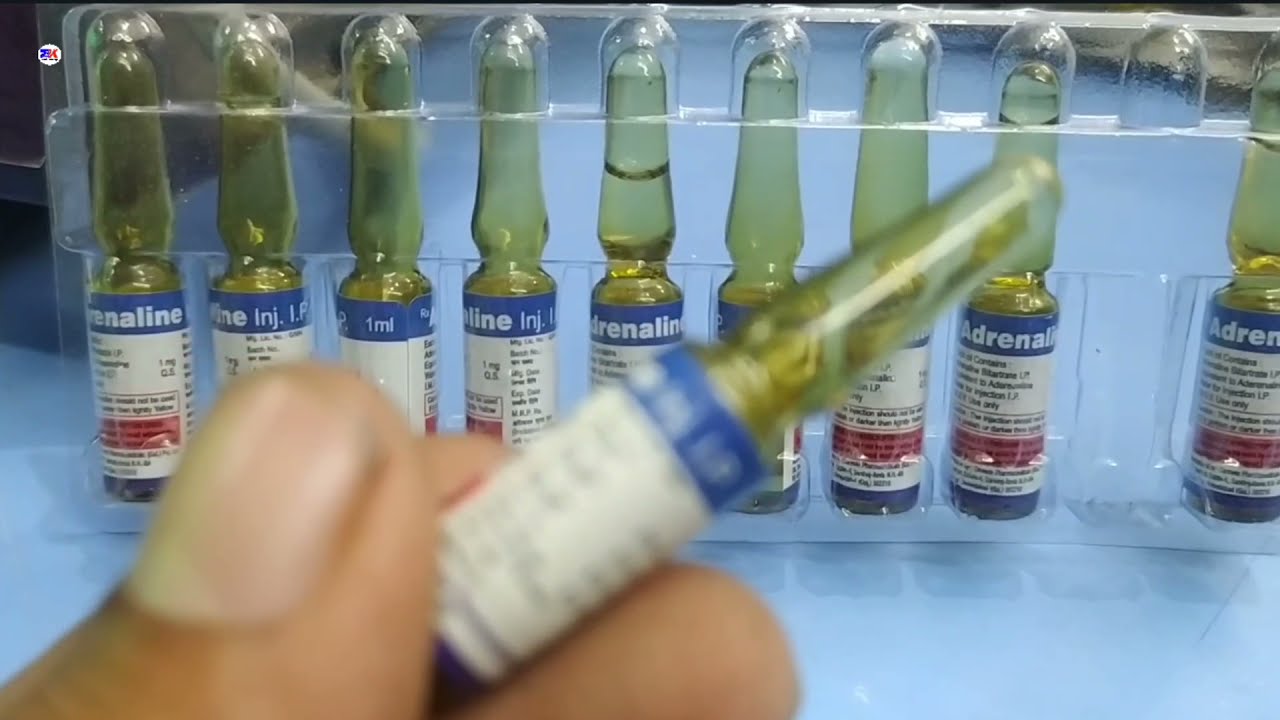Adrenaline, also known as epinephrine, is a vital medication used in emergency situations to address life-threatening conditions. It plays a crucial role in the body's stress response and is commonly administered in various healthcare settings. This article aims to provide an overview of adrenaline, including its mechanism of action, appropriate dosing, indications for use, and the associated nursing responsibilities.
 |
Mechanism of Action:
Adrenaline acts on various receptors throughout the body, predominantly binding to alpha- and beta-adrenergic receptors. Through this interaction, it elicits a wide range of physiological responses. Adrenaline increases heart rate, cardiac contractility, and systemic vascular resistance, leading to increased blood pressure. It also causes bronchodilation, promotes glycogenolysis, and inhibits mast cell degranulation, which reduces the release of inflammatory mediators.
Dose:
The dosage of adrenaline depends on the indication for its use and the route of administration. It is important to follow institutional protocols and consult specific guidelines for accurate dosing information. The most common routes of administration are intravenous (IV), intramuscular (IM), and subcutaneous (SC). Here are some general dosing recommendations:
Anaphylaxis:
IV infusion: Start with 0.1 to 0.5 micrograms per kilogram per minute, titrated to response.
IM/SC injection: 0.3 to 0.5 milligrams (mg) (1:1000 solution) every 5 to 15 minutes as needed, up to a maximum of 0.5 mg per dose.
Cardiac Arrest:
IV/IO bolus: 1 mg (1:10,000 solution) every 3 to 5 minutes during advanced cardiac life support (ACLS) resuscitation.
Asthma/COPD Exacerbation:
Nebulized: 0.5 mg (1:1000 solution) every 20 minutes for up to three doses, as needed.
IM/SC injection: 0.3 to 0.5 mg (1:1000 solution) every 20 minutes, as needed.
Indications:
- Adrenaline is indicated in various emergency situations, including but not limited to:
- Anaphylaxis: Adrenaline is the first-line treatment for severe allergic reactions. It helps reverse airway constriction, relieve hypotension, and counteract life-threatening symptoms.
- Cardiac Arrest: Adrenaline is an integral part of ACLS protocols for the management of cardiac arrest. It improves coronary and cerebral perfusion during resuscitation efforts.
Asthma/COPD Exacerbation: Adrenaline may be used in severe cases of bronchospasm that are unresponsive to conventional bronchodilators. It provides additional bronchodilation and relief of respiratory distress.
Nursing Responsibilities:
When administering adrenaline, nurses play a crucial role in ensuring patient safety and optimal outcomes. Here are some essential nursing responsibilities:
- Accurate Preparation and Administration: Nurses should double-check the dosage, dilution, and route of administration. Adrenaline is a high-alert medication, and any errors can have serious consequences. Dilutions and concentrations must be carefully calculated and verified.
- Monitoring and Assessment: Nurses should closely monitor vital signs, cardiac rhythm, oxygen saturation, and the patient's overall response to adrenaline administration. Any adverse reactions or changes in the patient's condition should be promptly reported to the healthcare team.
- Documentation: Detailed and accurate documentation is essential, including the indication for administration, dosage, route, time, and patient response. This documentation is vital for continuity of care and legal purposes.
- Patient Education: Nurses should provide appropriate education to patients and their families regarding the purpose of adrenaline administration, expected effects, potential side effects, and when to seek further medical assistance.
Adrenaline is a potent medication used in emergency situations to manage life-threatening conditions. Understanding its mechanism of action, appropriate dosing, indications, and nursing responsibilities is essential for safe and effective administration. By adhering to established protocols and guidelines, nurses can ensure the optimal care and outcomes for patients receiving adrenaline therapy.


No comments:
Post a Comment